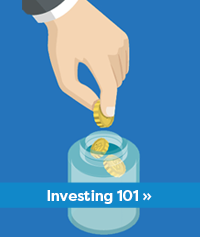Setting up an RRSP

They say that the best time to plant a tree was ten years ago, with the second-best time being today. Retirement planning follows a similar philosophy. For many of us, we wait to start planning for retirement because it seems like something our future selves can worry about. But the truth is, while it’s never too early to start thinking about your long-term savings, it can be too late. A Registered Retirement Savings Plan (RRSP) is a safe and easy way to contribute to your retirement today, so you can relax tomorrow. Plus, RRSPs offer some great tax incentives, so you’ll feel the benefits of contributing before you retire. In this CUAdvice article, we’re going to discuss tips for setting up an RRSP so you can get one step closer to reaching your full financial potential.
What is an RRSP?
An RRSP is a government-approved investment option that helps you save for retirement, while also giving you an immediate tax break. It’s best understood as a retirement savings and investing vehicle; that is, a place to keep your savings and investments where they can grow and generate income. For example, an RRSP can hold qualified investments such as stocks, bonds, mutual funds, guaranteed investment certificates (GICs), and exchange-traded funds (ETFs). You can set up an RRSP through a financial institution like a bank, credit union, or insurance company.
Who can open an RRSP?
In Canada, there’s no minimum age for opening an RRSP as long as the individual has employment income and files a tax return. CUA members can open an RRSP at their branch location, or by calling us at 902.492.6500.
There is an age limit for making contributions to your RRSP; you’ll have to start withdrawing your money by December 31 of the year you turn 71. There are a variety of options available when it comes to using your RRSP contributions, including opening a Registered Retirement Income Fund (RRIF). Reach out to one of CUA’s Financial Advisors if you have any questions about your options.
What are the tax benefits of an RRSP?
By growing your investments within an RRSP, you’re not only saving for retirement, but you’re also saving in the short term through RRSP tax benefits. When you invest money into your RRSP, you receive an immediate tax break since your contributions reduce your net taxable income. In turn, this decreases the amount you’ll owe to the Canada Revenue Agency (CRA) on your annual income tax. Additionally, the amount you contribute to your RRSP is sheltered from tax until you withdraw it. It is then taxed at your income tax rate at that time. Ideally, if you wait until you retire to withdraw your funds, it is likely that you’ll be in a lower tax bracket and will ultimately pay less taxes.
When can I withdraw from my RRSP?
RRSPs, as the name implies, should be used for retirement savings. However, as long as you don’t have a “locked in” plan, you are able to withdraw funds before then. Some people use their RRSP funds for buying a home or going back to school. These are two special cases where, with some conditions, the amount you withdraw won’t be considered taxable income.
For any other pre-retirement withdrawals, you will have to pay a withholding tax, which varies dependent on the amount you withdraw. Additionally, the funds you receive (the withdrawn amount less withholding tax) will be added to your income for the year and will be subject to income tax. It’s important to note that when you withdraw money early, you’re losing the opportunity to build compound interest, which can really add up over time. You will also not regain the contribution room for the amount you withdrew that year. So, if you’re debating withdrawing money for a smaller purchase, it’s best to leave your RRSP alone to let it continue growing tax-free.
How much can I contribute to my RRSP?
Your contribution limit is the total amount of money you can add to your RRSP per year. This amount is 18% of the total income earned in the previous year, up to a maximum limit set by the government (in 2023, this limit is $30,780). You can find your personal contribution limit on your CRA Notice of Assessment each year or by logging into your My CRA Account. Don’t worry if you’ve already opened an RRSP but haven’t been contributing to your full annual limit. Any unused contributions (that is, whatever room you have left at the end of the year) will roll over into future years, where you can make a larger contribution should you choose.
How can I make the most of my RRSP?
While making a lump sum contribution to your RRSP is positive, having regular or ongoing contributions is a great way to maximize its growth and make the most of your tax benefits each year. Regular contributions add up over time and setting up automated deposits can make this even easier. Some organizations will also offer contribution-matching programs as an employee benefit, so it’s worthwhile to check with your employer and take advantage of the opportunity if it’s available for you.
When planning your investments, think about your long-term savings goals and communicate them with your financial advisor. At CUA, we’ll help you learn about the different investment options available, and tailor-make an RRSP plan that works for you and your family.
While there are many ways to save, RRSPs are safe and reliable investment vehicles that can take the guess work out of your retirement planning while giving you an immediate tax break. If you have any questions about opening an RRSP or saving for any of your long-term goals, please reach out to a member of our team at info@cua.com or by calling 902.492.6500.
Published Jul. 11, 2023






